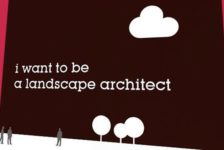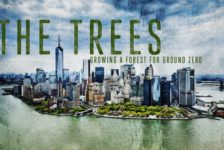Lotus Lake Park by Integrated Planning and Design Inc. Historically, China has had a somewhat less than stellar reputation for living conditions, particularly in cities where rapid growth and urbanization has occurred. However, after many decades of overcrowding, pollution, and virtually non-existent green space in cities, China has managed to become a world leader in environmental design and planning. Today, China is a cultural center for technology and innovation, and the field of landscape architecture is no exception. In fact, China was recognized as the country experiencing the most growth in landscape architecture in our article 5 Countries Where Landscape Architecture is Booming.
Sudden growth in sustainable urban design?
Growing concerns over public health and environmental sustainability have created a demand from people in China for an improved living environment, particularly in cities, which has in turn stimulated the redevelopment of industrial lands into valuable urban and community spaces that enrich the lives of locals. Lotus Lake Park, completed in 2011, is a testament to this shift in urban design. Lotus Lake Park; a park or a community complex?
At 4.4 hectares, Lotus Lake Park is less of a park and more of a community complex. Located in the Jiangsu Province of Eastern China, this park is part of the greater revitalization and redevelopment of the city of Kunshan, which is expected to be a center for growth for the region. The park functions not only as a significant cultural and recreational center for the growing community, but as a precedent that will influence the design and character of new development as the city expands westward. Award Winning Design! Designed by Integrated Planning and Design Inc, the park has been recognized globally by professionals for its contribution and excellence in the field of landscape architecture. It was the recipient of the 2014 Honor Award from the Northern California ASLA chapter. Ecologically Inspired The Chinese firm focuses on creating balance and harmony between people and the environment, particularly in urban places. Its approach emphasizes the importance of understanding context and using it to inform design. This approach is particularly evident in the design for Lotus Lake Park, which thoughtfully integrates elements from local history, culture, and geography. Utilizing Strong Identity with Water Located in a region rich in lakes and rivers, water holds a particular cultural and historical significance for the city of Kunshan. Fishing and aquaculture have long been important economic activities in the region. As a canal city, water is also closely connected to Kunshan’s cultural identity, and Lotus Lake Park manages to incorporate this theme of water throughout its design.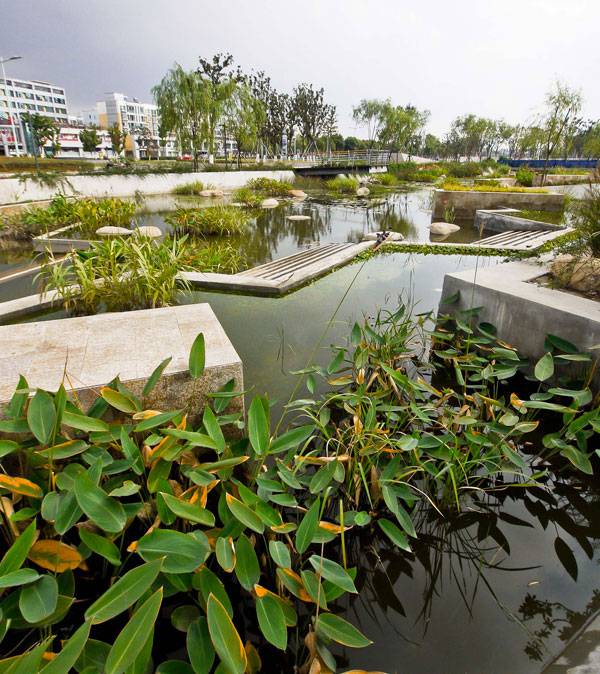
The parks upper ponds are large visual feature that include water cascades and plantings of the famed double-headed lotus flower. Credit: Integrated Planning and Design Inc.
- Contemporary Landscape Architecture in China: Beautiful or Dangerous?
- Shipyard Site Transforms into Stunning Ecological Park
- Turenscape Design Outstanding River Park
Water features play an important role in the park. The park’s centerpiece, a lake, is actually a productive aquaculture pool, where historically and regionally significant species are cultivated using sustainable aquaculture practices. A number of large display tanks, featuring historically cultivated plants and shellfish, are also present throughout the park, and act as educational tools to engage and inform visitors about local and sustainable aquaculture. Floating boardwalks create a pathway system that allows visitors to explore the site freely and reduces barriers between park visitors and the water.
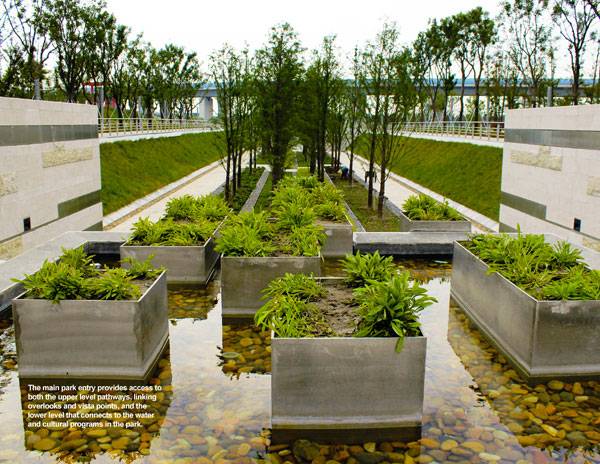
TEXT READS: The main entry provides access to both the upper level pathways, linking overlooks and vista points, and the lower level that connects to the water and cultural programs in the park. Credit: Integrated Planning and Design Inc.
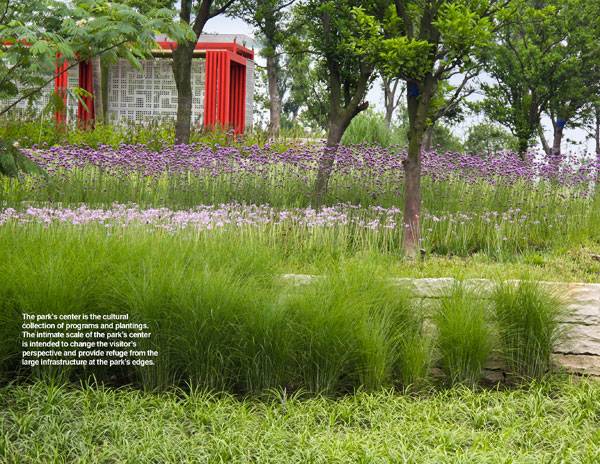
TEXT READS: The parks centre is the cultural collection of programs and plantings. The intimate scale of the park’s center is intended to change the visitor’s perspective and provide refuge from the large infrastructure at the park’s edge. Lotus Lake Park. Credit: Integrated Planning and Design Inc.
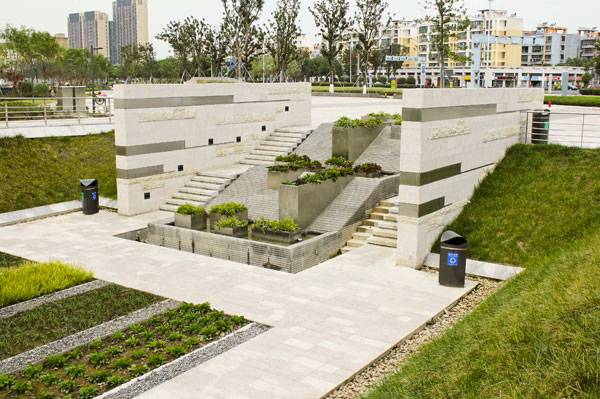
TEXT READS: The park’s main entrance off the Qianjin West Road seen from the upper walkway. Lotus Lake Park. Credit: Integrated Planning and Design Inc.
- Urban Design by Alex Krieger
- The Urban Design Handbook: Techniques and Working Methods (Second Edition) by Urban Design Associates
Article written by Michelle Biggs Return to Homepage
Published in Blog





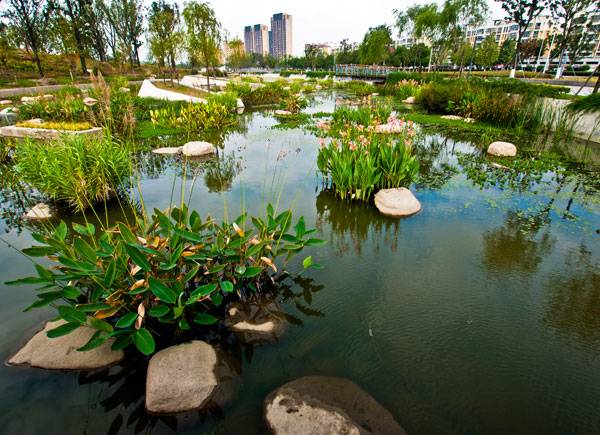


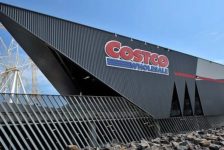
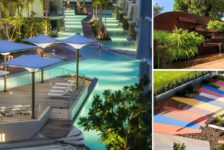
![Transitioning to Information Modeling Workflows [WEBINAR]](https://land8.com/wp-content/uploads/2018/03/vw-land8-224x150.png)

